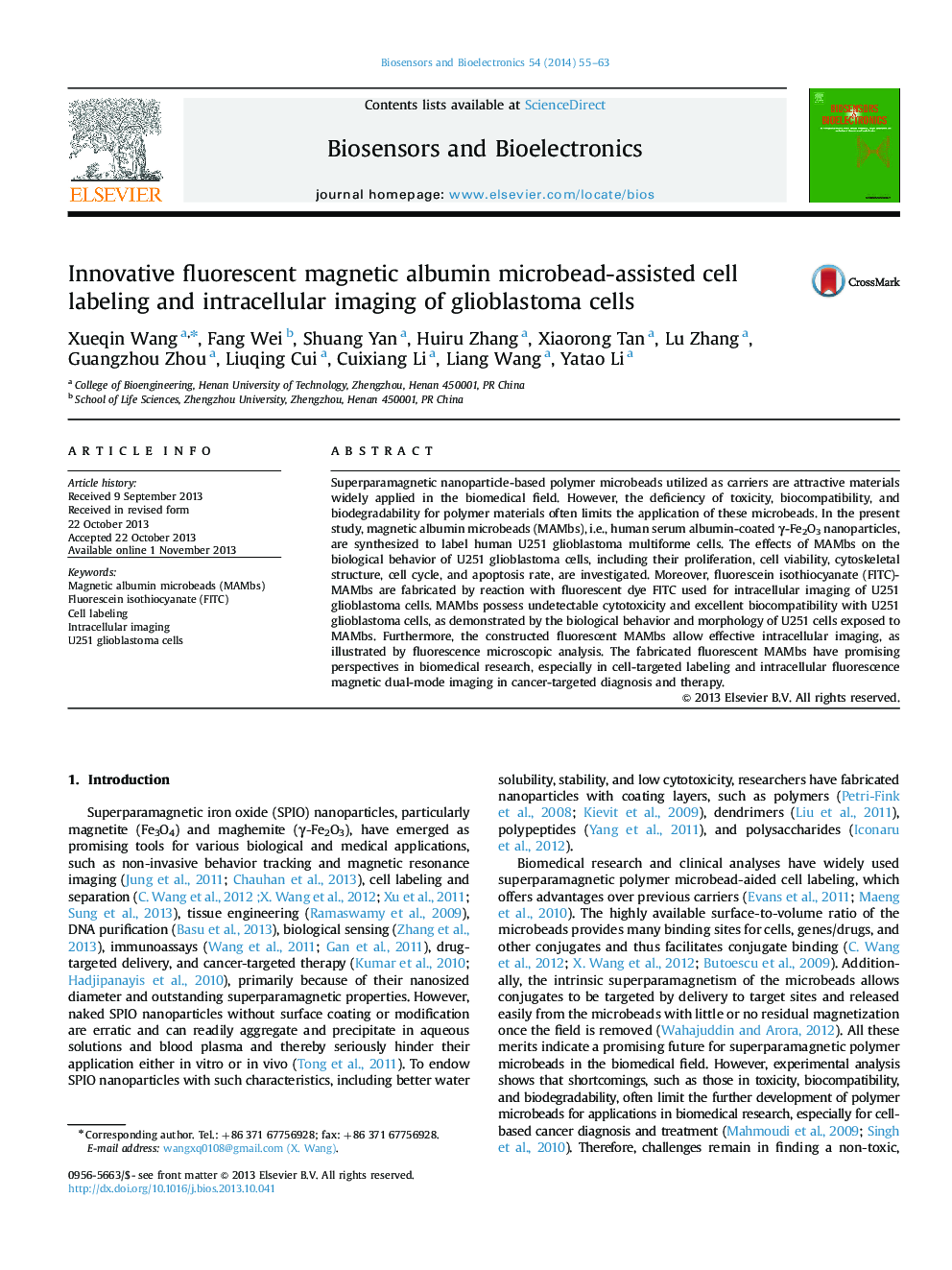| Article ID | Journal | Published Year | Pages | File Type |
|---|---|---|---|---|
| 7233643 | Biosensors and Bioelectronics | 2014 | 9 Pages |
Abstract
Superparamagnetic nanoparticle-based polymer microbeads utilized as carriers are attractive materials widely applied in the biomedical field. However, the deficiency of toxicity, biocompatibility, and biodegradability for polymer materials often limits the application of these microbeads. In the present study, magnetic albumin microbeads (MAMbs), i.e., human serum albumin-coated γ-Fe2O3 nanoparticles, are synthesized to label human U251 glioblastoma multiforme cells. The effects of MAMbs on the biological behavior of U251 glioblastoma cells, including their proliferation, cell viability, cytoskeletal structure, cell cycle, and apoptosis rate, are investigated. Moreover, fluorescein isothiocyanate (FITC)-MAMbs are fabricated by reaction with fluorescent dye FITC used for intracellular imaging of U251 glioblastoma cells. MAMbs possess undetectable cytotoxicity and excellent biocompatibility with U251 glioblastoma cells, as demonstrated by the biological behavior and morphology of U251 cells exposed to MAMbs. Furthermore, the constructed fluorescent MAMbs allow effective intracellular imaging, as illustrated by fluorescence microscopic analysis. The fabricated fluorescent MAMbs have promising perspectives in biomedical research, especially in cell-targeted labeling and intracellular fluorescence magnetic dual-mode imaging in cancer-targeted diagnosis and therapy.
Related Topics
Physical Sciences and Engineering
Chemistry
Analytical Chemistry
Authors
Xueqin Wang, Fang Wei, Shuang Yan, Huiru Zhang, Xiaorong Tan, Lu Zhang, Guangzhou Zhou, Liuqing Cui, Cuixiang Li, Liang Wang, Yatao Li,
